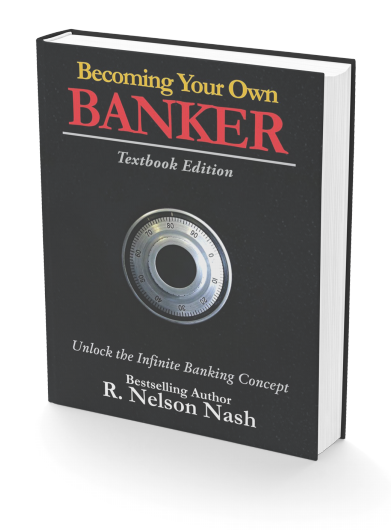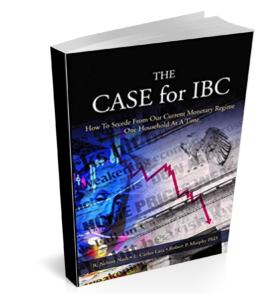Infinite banking is a financial strategy that has garnered attention for its unique approach to personal finance. Richard Canfield, an expert in infinite banking, and an Authorized Infinite Banking Practitioner with the Nelson Nash Institute sheds light on some of the most common questions about this concept.
Let’s dive deeper into each query to provide a comprehensive understanding of how infinite banking works.
Q1: What exactly is “infinite banking”?
Infinite banking is not a specific policy but a concept or strategy that individuals implement using dividend-paying whole life insurance policies. These policies serve as a tool for managing finances, allowing for greater control and flexibility.
By using the cash value of the policy as a personal banking system, individuals can borrow against it for various needs, effectively becoming their own bankers. This strategy emphasizes using life insurance not just for its death benefit but as a living financial asset that grows over time.
The term “infinite banking” was created by the late R. Nelson Nash, who outlined the concept in his book “Becoming Your Own Banker.” Nelson was my friend and mentor. I loved him and his impact on my life and my family has been immeasurable. You can read my statement after I found out about Nelson’s passing in 2019 here -> Richard Canfield’s Official Statement on the passing of R. Nelson Nash
The idea is to use the cash value within a whole life insurance policy to finance life’s expenses, rather than relying on traditional banking and lending institutions. By doing so, individuals can capitalize on the growth of their cash value while still having access to funds when needed. This is made possible by the power of collateralization and the foundational guarantees of the Dividend Paying Whole Life Insurance contract. The concept is just that, a way of thinking and the process of Becoming Your Own Banker is the way of doing it. It’s a mindset and then when implemented becomes a financial lifestyle. Insurance is just the cherry on top.
For example, if someone has a whole life policy with a significant cash value, they can take out a loan against that value to pay for a car, home renovations, or even to invest in a business opportunity. The policy continues to grow, and the loan can be repaid on the individual’s terms, rather than being subject to the rigid structure of a conventional loan.
Q2: What guarantees come with infinite banking policies?
Dividend-paying whole life insurance policies come with several guarantees. The premium amount is guaranteed and remains level for the life of the policy. The original death benefit is also guaranteed, providing peace of mind to the policyholder and their beneficiaries. This can grow mind you if the policy owner behavior is sound and they follow what Nelson Nash taught combined with proper policy design.
Additionally, once dividends are declared by the insurance company, they are guaranteed to be paid out to policyholders.
However, future dividends cannot be guaranteed as they depend on the profitability of the insurance company. It’s important to note that the cash value and death benefit are linked, growing together over time. The cash value represents a portion of the future death benefit, which is why it increases as the policy matures.
For instance, if a policyholder has a whole life policy with a guaranteed death benefit of $500,000, the cash value will grow over time, reaching closer to the $500,000 mark as the policyholder ages. If the insurance company declares dividends, those dividends can be used to purchase additional paid-up insurance, increasing both the cash value and death benefit.
Q3: Is infinite banking known by any other names?
While “infinite banking” is the most common term, the concept has been marketed under various names. R. Nelson Nash’s original term was “Becoming Your Own Banker,” which emphasizes the action of taking control of one’s financial life. Some marketers have used terms like “cashflow banking” or even “bank on yourself” to promote their own spin or claim on the concept. There have been others, however Nelson Nash was the first one to truly discover the critical importance of life’s financing needs and that they could be solved using this tool intentionally. Everyone knew about the borrowing possibility of Policy loans, but until Nelson Nash came along, no one understood how to think this way about life needs captured and harnessed using his concept.
It’s important to recognize that these different names refer to the same underlying strategy. The goal is to use a whole life insurance policy as a financial tool to manage cash flow, invest in opportunities, and ultimately create a more secure financial future.
For example, a marketer might use the term “cashflow banking” to highlight the ability to use the policy’s cash value to improve cash flow management. Another might use “bank on yourself” to emphasize the self-reliance aspect of the strategy.
Regardless of the name, the core principles of using whole life insurance as a personal banking system remain the same.
Q4: Does the insurance company retain my cash value when I pass away?
There’s a common misconception that the insurance company keeps the cash value of a whole life policy when the policyholder passes away. However, this is not the case. The cash value and the death benefit are linked, with the cash value representing a portion of the future death benefit.
When the policyholder dies, the beneficiaries receive the death benefit, which includes the accumulated cash value.
It’s important to understand that the cash value is not a separate fund that the insurance company holds onto. It’s an accounting measure that represents the policyholder’s equity in the policy. As the cash value grows, it reduces the insurance company’s net amount at risk, which is why the death benefit includes the cash value.
For instance, if a policyholder has a whole life policy with a cash value of $100,000 and a death benefit of $500,000, the beneficiaries would receive the full $500,000 death benefit upon the policyholder’s passing.
The cash value is essentially absorbed into the death benefit, ensuring that the beneficiaries receive the full amount promised by the policy.
Q5: How much cash value can I borrow and how long does it take to receive the funds?
Policyholders can typically borrow up to 90% of the total cash value of their whole life insurance policy. The process for accessing these funds can vary depending on the insurance company. Some companies offer online access where policyholders can request a loan with the click of a button, while others may require a manual policy loan form to be filled out and submitted.
The time it takes to receive the funds also varies but usually falls within five to ten business days. In some cases, policyholders can even request a loan over the phone, verifying their identity and policy details before the funds are released.
For example, if a policyholder has a cash value of $50,000 in their whole life policy, they could potentially borrow up to $45,000 (90% of the cash value). If they submit a loan request online, they might see the funds deposited into their bank account within a week, providing quick access to capital for investments, emergencies, or other financial needs.
Infinite banking offers a unique approach to personal finance, leveraging the features of whole life insurance to create a flexible and powerful financial tool. By understanding the guarantees, terminology, and mechanics of accessing funds, individuals can make informed decisions about implementing this strategy in their own lives.
If you want to learn more about Infinite Banking, we wrote an entire Book on this you can find here.



